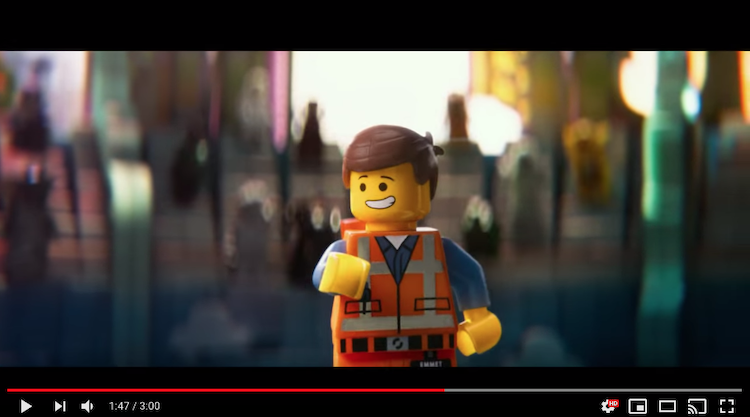Whether you just pulled off a killer media event or implemented a new content strategy for your organization’s online channels, the hardest part often comes last: reporting. Return on investment, or ROI, is one of the most difficult metrics to measure but is arguably the most critical proof point of your success. Social media followers, media hits, and similar results are positive outcomes, but you can’t demonstrate how they make money for your organization, they aren’t sustainable tactics for the long haul.
At CBC, we implement a comprehensive tracking and measurement system with each client before we embark on any new project. Doing so allows us to see, often in real-time, how our proposed strategy is performing, where we need to make adjustments, and whether we are truly making headway towards our outlined business objectives. Today, we’re sharing the top five digital tools and systems your team should implement to ensure you can articulate the return on investment of your digital or PR program:
Before We Get Started…
By the time you begin to track and measure your success, you should have several pieces in place, including but not limited to:
- A documented digital strategy
- Knowledge of each user group you are trying to reach
- Knowledge of each channel those user groups are using and why
- A clear understanding of overarching goals and KPIs that are going to indicate success, including the monetary value of each KPI.
In the sections below, we outline our five go-to tools that we use to track the status of our campaigns and showcase success.
Download: Tracking Configuration Checklist
This checklist will give you a great foundation to track your goals. Enter your email address and we will send you a PDF of our Tracking Configuration Checklist.
1. Google Analytics
 In most cases, Google Analytics is our analytics software of choice. It’s free and the most benchmarked analytics system that currently exists. Google Analytics is going to tell you who is coming to your site, how they got there, what they did while they were there, and ultimately the results of that visit.
In most cases, Google Analytics is our analytics software of choice. It’s free and the most benchmarked analytics system that currently exists. Google Analytics is going to tell you who is coming to your site, how they got there, what they did while they were there, and ultimately the results of that visit.
Google Analytics can tell you, for example, how many people visited your “about us” webpage on the day your company was featured in the news. From there, you can track users’ behavior on your website and see if they participated in other nurturing activities, like downloading a whitepaper, signing up for your newsletter, or making a purchase. This is a very basic example of how Google Analytics can help you articulate the ROI of your efforts.
To use Google Analytics, all you have to do is put Google’s pixel code on your website. For more information on how to install this code, check with your content management system provider (CMS).
For organizations that want to get a bit more out of their analytics, there are some settings that you can configure to provide deeper insights into how users are leveraging your website. These advanced features include goals, events, site search, views, and filters. We will discuss some of these in this post.
2. Google Tag Manager
 Google Tag Manager is a free product from Google that allows you to manage pixel tracking codes from various companies without the need for knowing how to code. For example, when you deploy Google Analytics, you should leverage Google Tag Manager to get the code on your website. In fact, most platforms where you will be connecting with users will have a conversion tracking pixel or an analytics tracking code for their specific platform. This draws a bridge between platforms like Facebook, Instagram, Linkedin, and Twitter to what users are doing on your site. These tags are key to understanding what is relevant to your users and brings clarity to the results of the investment being made into marketing.
Google Tag Manager is a free product from Google that allows you to manage pixel tracking codes from various companies without the need for knowing how to code. For example, when you deploy Google Analytics, you should leverage Google Tag Manager to get the code on your website. In fact, most platforms where you will be connecting with users will have a conversion tracking pixel or an analytics tracking code for their specific platform. This draws a bridge between platforms like Facebook, Instagram, Linkedin, and Twitter to what users are doing on your site. These tags are key to understanding what is relevant to your users and brings clarity to the results of the investment being made into marketing.
Another huge advantage of a tag management system is convenience. A simple user interface (UI) makes it easy for a marketer to deploy code to their website without having to get a developer involved. This saves time, effort, and possibly money for everyone involved.
3. Conversion Tracking
 The conversions tracking section of Google Analytics is broken down into 2 core components:
The conversions tracking section of Google Analytics is broken down into 2 core components:
- Goals – essentially your numerical KPIs
- Ecommerce – a specific type of goal that tracks how much revenue is generated from the site.
Before you get going, you need to:
- Know your strategy
- Know your channels
- Know your KPIs
Goals can be set up in a few ways. To start, they can be based on how users interact with your website. For example, you may know that if a user watches a video on your website, they have a 10% higher likelihood of becoming a lead. Another example is to track pageviews of a thank you page, a page that can only be reached if someone filled out a form.
You may be asking: Great, what do I do with this information once I have it set up?
In short, this information is going to tell you where to spend your time and money. If you find that users who convert are starting in social media and coming back to your site from an email marketing nurture campaign, you will want to put more effort into those types of activities to get the most out of your efforts. If you can quantify what a lead is worth to your organization, you can take this information and articulate how many users your strategy has converted to leads, and what the monetary worth of those efforts equals.
These goal configurations allow you to track the volume of successes you have on your website and cross-reference (through Google’s channel report) with how people came to your site (generally through your marketing efforts). This information is incredibly valuable. A few ways you can use this information:
- Funnel optimization
- Channel effectiveness
- User experience feedback
- Business impact
All these and more allow you to progress your marketing efforts further, satisfy the user’s needs, and help build a business, cause, or subscriber base.

On the ecommerce side, everything that we have already talked about still applies, but one additional tool that can be helpful is the Multi-Channel Funnels link under Conversions in Google Analytics.
It is easy to see prospects come in from something like organic search, see them fill out a form, and conclude “We need more of that”. The one key piece of information this tool brings into the light is the channel combinations that were required to get the user through their journey. It is extremely common for a user to:
- Receive first exposure in social media
- Be intrigued enough with your content to share an email address
- Nurture that user through a series of emails
- Get that user thinking and researching and Googling your product or service
- Request a call with your sales team or buy a product on your ecommerce site by Googling your company name and clicking on your blue link in Google.
There is an entire unique science to figuring out that puzzle on a per organization basis.
4. Event Tracking
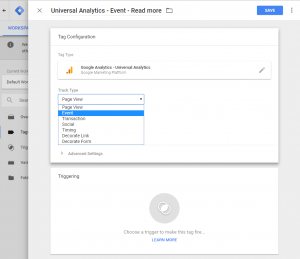 Events are configured within Google Tag Manager. By configuring these, you gain additional insights into what your users are doing on your website. Google Analytics does a great job of tracking pageviews, but activities such as scroll depth, video plays, clicks on social media icons, interactions with a gallery slider (and just about any other action a user does on your site) can be tracked through Tag Manager.
Events are configured within Google Tag Manager. By configuring these, you gain additional insights into what your users are doing on your website. Google Analytics does a great job of tracking pageviews, but activities such as scroll depth, video plays, clicks on social media icons, interactions with a gallery slider (and just about any other action a user does on your site) can be tracked through Tag Manager.
This tool allows you to test theories on how users are interacting with your site and provide insights into how to provide a better experience to the user and produce better outcomes for your organization.
Some example uses:
- How far are users watching your demo video? If too many people are not finishing the video, you can dig into qualitative and quantitative data to diagnose what may not be working. Is it too long? What is happening in the second minute that loses the user’s attention?
- How many people click on your social media links? If you’re in B2B, this can give you an idea of how companies are vetting you. If you’re a B2C company, this can show potential channel subscribers or followers coming directly from your website.
- How about A/B testing content? Did version 1 of the homepage call-to-action (CTA) perform better than version 2? Event tracking is how you can measure all of this.
5. UTMs
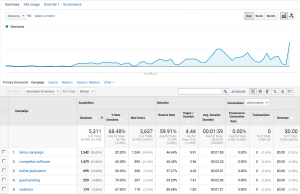 Urchin Tracking Modules (UTMs) are the best way to track marketing sources beyond that of just a referral, which is how Google Analytics will define a user that visits your site by clicking a non-search link on any other site (i.e. a social media post.) The UTM is added to the end of a URL and uses the content that you put into the URL string to track information about where the user came from and what content they viewed that inspired them to click. The core strength of UTMs is its ability to provide high-level reporting while providing the option of uncovering nitty-gritty details of how users are getting to your site (regardless of where the UTM link is located: social, email, referring sites, or even your email signature).
Urchin Tracking Modules (UTMs) are the best way to track marketing sources beyond that of just a referral, which is how Google Analytics will define a user that visits your site by clicking a non-search link on any other site (i.e. a social media post.) The UTM is added to the end of a URL and uses the content that you put into the URL string to track information about where the user came from and what content they viewed that inspired them to click. The core strength of UTMs is its ability to provide high-level reporting while providing the option of uncovering nitty-gritty details of how users are getting to your site (regardless of where the UTM link is located: social, email, referring sites, or even your email signature).
There are 3 major components to a UTM:
- Campaign Name – This is the theme or core goal you are trying to accomplish (FlashSale, Renewals, Engagement, Brand Awareness, Black Friday)
- Campaign Source – This is the channel that you published the link on (Facebook, LinkedIn, Google)
- Campaign Medium – The location or description of the placement of the link (PPC, email, organic social, paid social)
- Bonus: Campaign Content (This is an optional one, and not one of the major ones) – This is the version of content or ad variation that goes with this link. Use this to test ad copy and A/B test email layouts.
When deploying UTMs to your webpage URLs, here are some best practices to keep in mind:
- Add a filter to lowercase these variables in Google Analytics so your data doesn’t get fractured if there is inconsistency in the way UTMs are created
- Campaign names should be high-level themes and should ideally be consistent across multiple channels. Most companies have a multi-channel strategy, therefore you need a multi-channel tracking deployment. By making sure your campaign names are consistent and high-level across all channels, you gain the ability to easily measure the effectiveness of those campaigns across multiple channels and multiple pieces of content.
- For more advanced teams, leverage the campaign content field to either A/B test or describe the content of a social media campaign to see what resonates with your users.
Using UTM codes, you could, for example, easily track the number of site purchases, RFPs, or other action valued by your organization that come in through your various marketing efforts.
There is a vast amount of options available for marketers to track their campaigns. If you can think of a metric you want to track, there is a pretty good chance that you can collect the data on it. If you have an interesting tracking/reporting problem to solve, you know where to find us!
How many interns can say that one of their first assignments on the job was to walk in Boston Fashion Week?
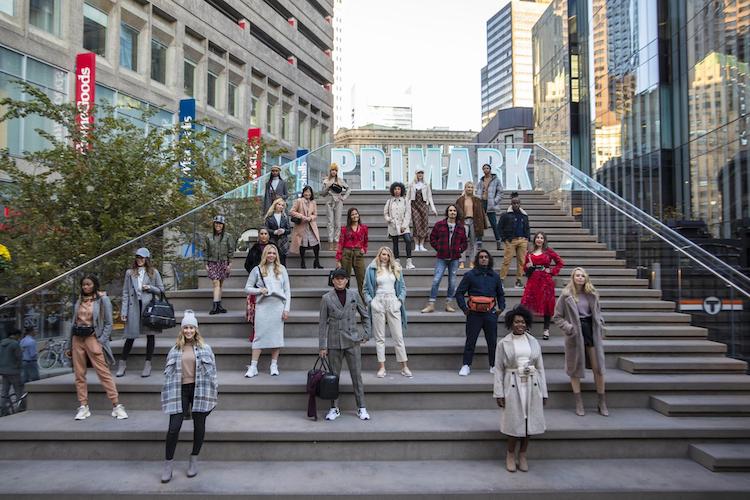
This fall, right before Boston was hit by those inevitable October winds, CBC organized a fashion show and afterparty at Primark’s Downtown Crossing location, featuring their fall collection… and they asked me (Maddie) and my fellow intern pal Lindsay to participate! Not only was it an absolute blast to be a part of, but we were also able to learn the ins and outs of experiential marketing firsthand. (And we realized how lucky we are to be learning from the pros at CBC for a whole semester.)
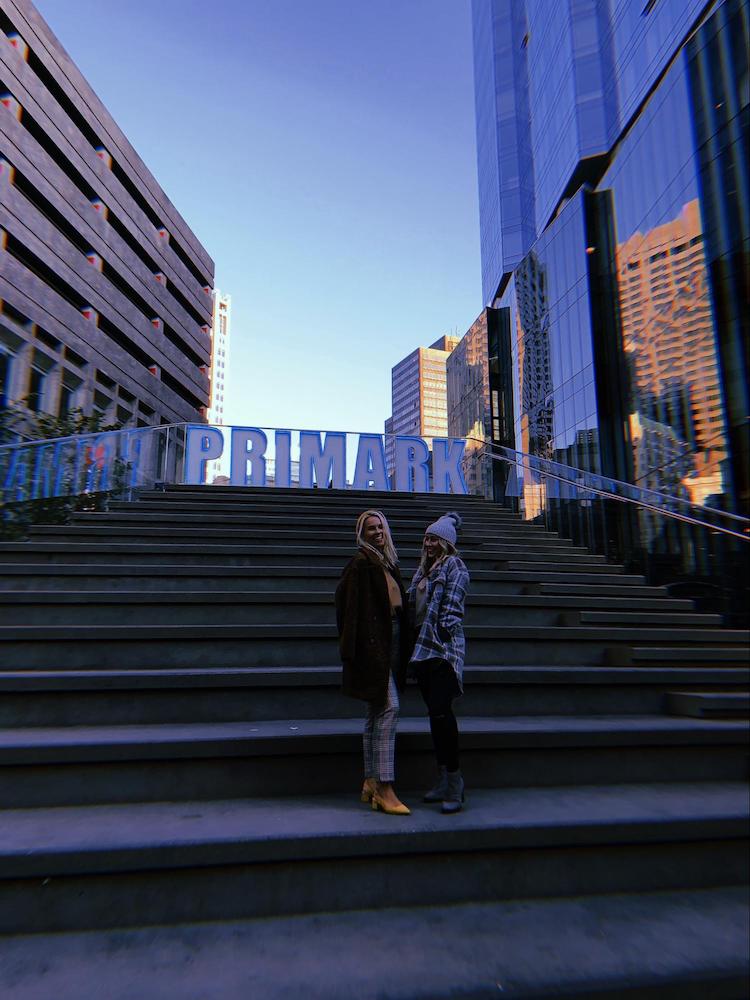
Crafting an Experiential Marketing Campaign
The goal of this experiential marketing project was to raise Primark’s profile as a must-shop destination in downtown Boston. By showcasing trendy, affordable looks for both men and women while connecting with the Downtown Crossing community, CBC did just that.
We partnered with local businesses and celebrities, like radio and television personalities Billy Costa and Jenny Johnson who hosted the event. The afterparty featured local DJ YVNG PAVL playing a live set, mocktails, and a gif booth for community members to interact with. The diverse group of models were all local, first-time models chosen for their personal style and their ties to the Downtown Crossing community.
CBC played a crucial role in pre-event logistics like model outreach and management and unique on-site branding elements. Event promotion included online calendar listings, in-store signage, and utilizing our influential hosts’ and DJ’s social platforms. CBC also sourced massive, illuminated letters to spell out PRIMARK at the top of the famous Downtown Crossing steps, which is where the fashion show took place.
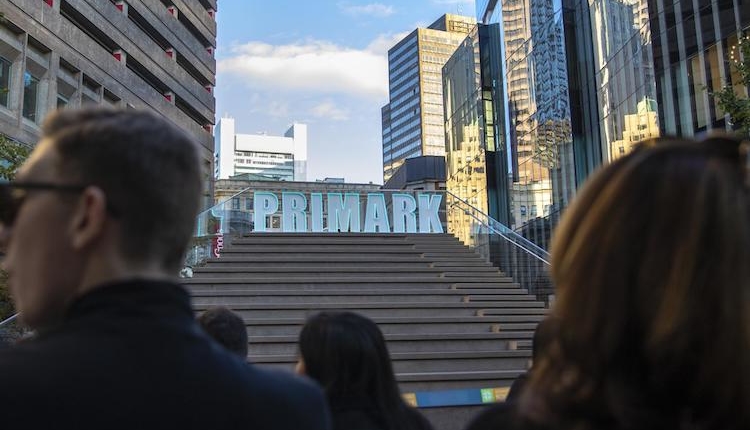
Since we were (literally) right in the middle of downtown, the event was free and open to all. Commuters and tourists alike stopped on their way through the busy area and stayed for the show, taking videos and pictures. The fun continued at the afterparty in Primark’s store, where attendees had the opportunity to shop all their favorite looks seen minutes before on the runway (…or stairs and sidewalk).
The View from the Runway: Walking in Boston Fashion Week
When Lindsay and I were asked to participate in Primark’s fashion show, of course we both immediately said yes. Who knew when the next time an opportunity as cool as this one would fall in our laps?
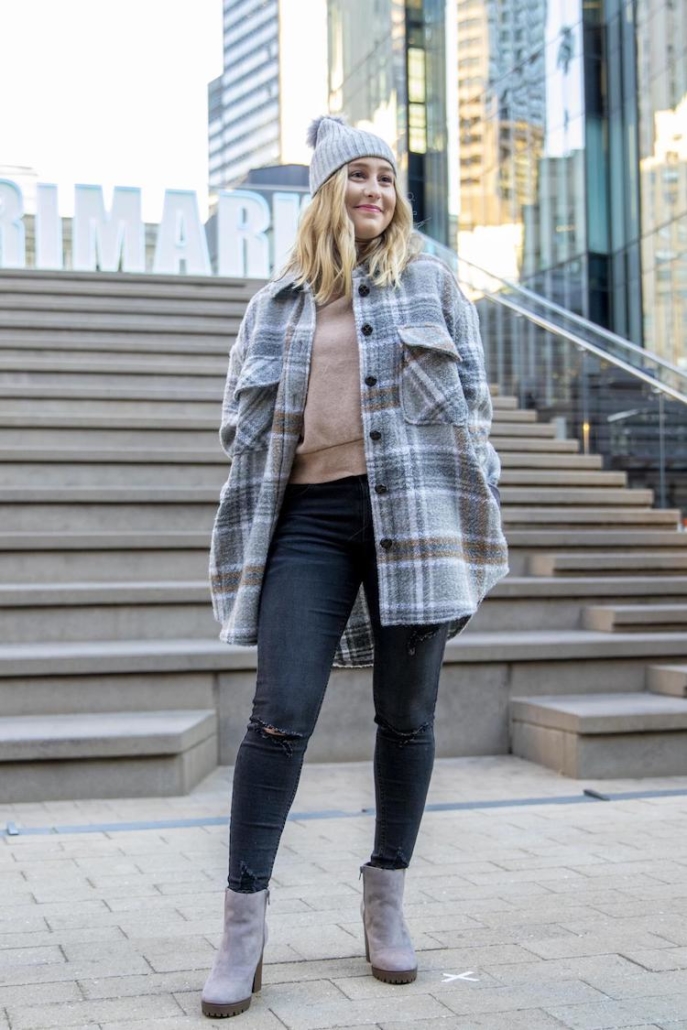

On the evening before the show, we left our CBC headquarters in the West End and walked downtown to our fitting, where the stylists accessorized us and fixed sizing issues.
On the day of the show, Lindsay and I anxiously headed back to the Primark store for hair and makeup with the other models. After receiving a proper pampering, we went outside to rehearse the choreography for the show. We scurried back into the store for final fittings and touch-ups, and before we knew it, it was time to get our Blue Steel on.
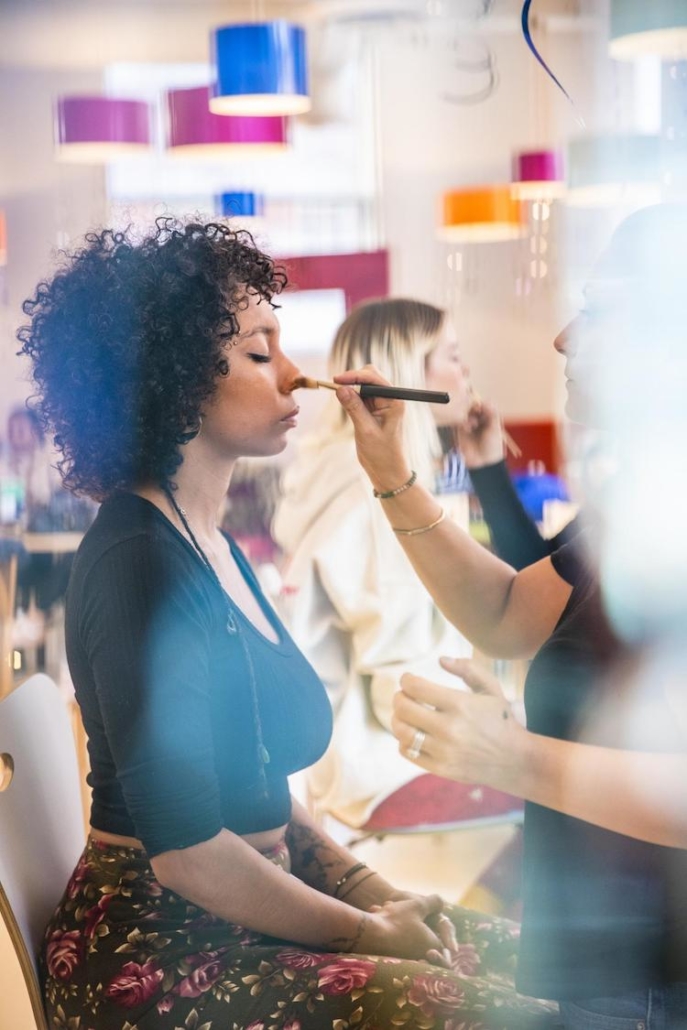
There were three different “lines” or themes to the show: the first celebrated the store’s 50th anniversary with looks inspired by the 1950s. The second focused on reds, pinks, and floral patterns, and the third was dedicated to neutral colors. The models utilized the big concrete steps right outside of Primark so that people passing by could see each look above them without being directly in front of the “runway.”
Hosts Billy Costa and Jenny Johnson provided background information on the models and how they were connected to the downtown Boston community, whether through work, play, or life in general. It was a fun way for the audience to see that the models really were just a group of normal, diverse, everyday people who felt confident and comfortable in Primark clothing. Price was also a major talking point; the celebrity hosts mentioned the total price of each look from head to toe, emphasizing how cost effective the outfits are.

The show ended with all of the models lining up on the concrete steps for a killer photo op, and then everyone flooded into Primark for the afterparty. DJ YVNG PAVL played a live set while guests, shoppers, and models sipped on handcrafted mocktails and posed in trendy Primark accessories at the gif booth. The gifs that participants made were emailed to them so they could be shared on their various personal social channels, promoting both the local event and Primark as a brand.
Key Takeaways from the Boston Fashion Week Show
My first major takeaway is that CBC seriously hooks it up for their interns by immersing us right into events! But in all honesty, when I started my internship last month, I was most excited to learn about CBC’s extensive and creative experiential marketing programs. By being fully engaged in this experience and having a hand in our social media coverage after the event, I was able to learn more than I would from any textbook for my marketing classes (but don’t tell my professors). Not to mention, Lindsay and I really didn’t hate pretending to be models for the night…

When you’re working with a brand as cost-effective and community-oriented as Primark is, the only logical option is to feature an event that truly engages the local community. CBC found that perfect sweet spot by planning a free, public fashion show with local, first-time models in the middle of a shopping block with some of the most foot traffic in Boston. It was the perfect opportunity to build brand awareness by establishing Primark as approachable to everyday shoppers, from high fashion bargain hunters to people who just want a comfy pair of sweatpants.
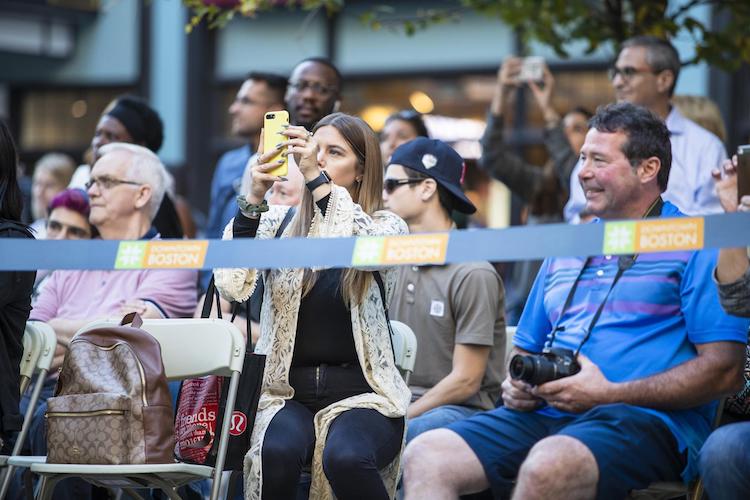
By participating in Boston Fashion Week with stylist-curated, high fashion inspired looks, Primark was able to position itself as a serious fashion brand with major crowd appeal. The public also had the ability to walk straight into the store during the afterparty and purchase an entire look from head to toe at a fraction of what a high fashion runway look would cost. By seeing everyday men and women wearing the looks (and not 6’ tall supermodels), and by hearing Billy and Jenny’s commentary about each model’s personal life (where they work, their hobbies, their fashion inspo), the audience felt more connected to the person wearing the outfit, and thus the brand. The fashion show made it easy for people to envision themselves in the models’ shoes (literally).
The success of an experiential marketing event like Primark’s Boston Fashion Week show hinges on so many factors: the perfect location, timing, engaging activations for attendees, and attention to locality and community. CBC’s experiential marketing pros know how to handle event logistics and promotional strategy with ease. So if your brand is looking to launch an experiential marketing campaign, you know who to call.
No one wants to be hit with an ad during a movie. But what if the whole movie was an ad? This might sound like the opposite of how you’d want to spend your time or money, but chances are you’ve already sat through subliminal advertising in the form of branded entertainment. Read on to learn more about how this evolving industry trend is blurring the line between content and advertisements.

What Is Branded Entertainment?
Branded entertainment is a marketing strategy where a company creates their own media content for the purpose of associating their brand with the values and emotional appeal of said content. With branded content, you’re telling your brand’s story through the content.
Branded entertainment differs from traditional product placement. Product placement implies that an advertiser is paying to have a reference to their brand included in a creative work like a film or TV show. With branded content, the brand is woven into the storyline on a deeper level than just slipping a logo or product into a few scenes. The direction of the entire creative work embodies the brand’s values.
So what does branded entertainment actually look like? A prime example is The LEGO Movie. More than just a movie based on a toy, this feature-length film truly captivated audiences and was a major win for LEGO’s marketing efforts. We’ll talk more about that in a sec…
Goodbye Advertisements, Hello Branded Entertainment
Traditionally, we’ve seen brands use catchy TV ads to simultaneously tell a story and promote a product in a matter of seconds. But let’s be real: when was the last time you watched an ad on TV? With ad-free streaming services like Netflix and technology that allows you to fast-forward through commercials, fewer viewers than ever are seeing brands’ ads on their TV screens.
Online, the picture isn’t much rosier for advertisers, given the prevalence of ad blockers. Pop-ups, banner ads, and pre-roll (or even mid-roll!) video ads annoy users, so they have found ways to avoid them.
Rather than focusing on ads that interrupt the consumption of content, brands have realized that they need to be in the content itself. Product placement was a good start for infiltrating movies and television, but can still come across as too heavy-handed (shoutout to Wayne’s World for showing us the cringey way to do this!)
The solution: Branded entertainment that is first and foremost entertainment. When the story comes first, consumers will get real value out of your content and genuinely want to engage with it. The promotional elements are more subtle, more sophisticated, and ultimately more effective, since you’ve already captured the consumer’s attention.
Digital Branded Content
In this age, branded entertainment manifests in many different forms, and it’s not uncommon for a brand to promote itself in a 45-minute podcast or a two-hour feature film.
In 2014, The LEGO Movie came to life with the backing of Warner Bros. While the LEGO brand was already immensely popular, the film helped increase sales by 13% for the Danish toymaker. And while on the surface the movie looked like just another animated kid’s film, it increased LEGO’s brand awareness among the youngest generations–an audience where physical toys compete against video games and online entertainment for attention.
The LEGO Movie is obviously a high-profile version of long-form branded entertainment, but companies have seen similar results from producing branded video content on smaller scales. Estrella Damm created a 16-minute feature back in 2017, and more recently Apple’s holiday ad campaign featured 3 minutes of beautiful animation. The key with these videos is that entertainment comes first, and that’s what captures viewers’ attention.
Digital branded entertainment is not limited to just video content, although video is definitely one of the most popular formats in today’s media landscape. Brands are also exploring other forms of branded content like podcasts. Audio content like a podcast can reach consumers at times when they otherwise wouldn’t be able to consume visual content, like while driving or going for a run. And great content is what keeps podcast listeners coming back more — this is the key to succeeding with branded entertainment in any format.
Experiential Branded Entertainment
Beyond digital content, you can translate the marketing concept of branded entertainment into real-life experiences too. If you’ve ever taken a trip to The Wizarding World of Harry Potter or had dinner at the Hard Rock Cafe, you’ve engaged with experiential branded entertainment.
A branded experience sparks meaningful real-world interactions between a brand and consumers, resulting in a deep emotional connection. The experience becomes an unforgettable memory that builds a deep brand affinity.

Take the example of The Wizarding World of Harry Potter: this Universal Studios theme park immerses fans in the iconic settings of the beloved book and movie series. Theme park visitors get the chance to explore Hogwarts castle and wander the wizarding shops of Diagon Alley and Hogsmeade, following in the footsteps of their favorite characters. Fans flock to these attractions, eagerly engaging with the brand on-site.
And the experience doesn’t stop at the park exit — fans share their experience with a broader digital audience by posting photos and videos on social media. Their enthusiasm for the interactive experience reinforces their affinity for the brand and turns them into brand ambassadors.

Our Take on Branded Entertainment
Here at CBC, we’re experts in branded entertainment as experiences. Our experiential media programs connect brands to the country’s top media and influencers through immersive activations. We assemble a group of the country’s most influential journalists and invite them to stay at a home in an idyllic setting like Aspen, Sonoma, or Nantucket. For three days, they are immersed in activities that highlight some of the best new products available, set against a backdrop that reinforces the brands’ ethos.
Our experiential media programs connect influencers and lifestyle journalists with unforgettable brand experiences in settings that are both true to those brands and unforgettable for those who attend. It’s not what you might expect when thinking of branded content (although we create that too with our in-house content production studio!), but experiential marketing programs provide another avenue to capture the attention of your audience and tell your story.
Looking to create content or experiences that tell your brand’s story? At CBC, we’re branded entertainment experts. Get in touch to see how you can tap into our House programs, PR activations, and digital marketing programs.
CBC’s Digital & Content team recently attended INBOUND 2019 and learned ALL THE THINGS. To spread the marketing love, we’re sharing our highlights from the conference in a series of blog posts. In today’s installment, Rebecca Fennel, Sr. Account Executive, gives us the lowdown on her favorite session, sharing what she learned about brand storytelling.
Ah, the age-old question: How do you get customers to want your product so badly that they’ll spend their hard-earned money on it?
As marketers, we’ve made it our mission to answer this. A 20th century advertiser may have advocated for loud, persuasive tactics that aim to convince buyers that they NEED the newest thing NOW.
But today, we understand that consumers are much more complex than that. They have their own unique desires and the power to make personalized, informed decisions.

The Importance of Storytelling in Marketing
We’ve been hearing a lot about the importance of telling stories in marketing. To grab the attention of our audience, we need to craft stories that help customers understand the role of a product or service in their life, or how that brand is part of their own story.
Gabriela Pereira, Founder of DIY MFA, spoke at HubSpot’s INBOUND 2019 conference about the power of storytelling. Story, she says, is embedded in our neurology. If a story is told to us, we will listen. As marketers, this is how we get people to pay attention. Effective marketing is rooted in the intersection where a brand’s story meets its customer’s story.

Brand Identity and the Storytelling Matrix
Holding Out for a Hero
Brands, says Pereira, are like characters in movies or books. The hero of every story has their own unique personality and story to tell. The first step in creating a storytelling-focused marketing strategy is to identify which type of “hero” your brand is.
Your brand might be relatable, reflecting customers as they are. Or it could be aspirational, possessing almost superhuman qualities, showing customers what they could become.
Which one is your brand—relatable or aspirational?
Make Me a Promise
Next, figure out if your brand is promising change or preservation for your customers.
Are you trying to change something about your customer’s world? If so, you may be helping them make more money, create a better life, or get things done faster.
Or are you aiming to help them maintain the status quo? If so, your product or service could be helping your customers save money or time, preserve relationships, or maintain their health.

By examining the overlap between your brand’s identity and its promise, you can label your brand with one of four brand storytelling archetypes: an underdog, a disruptor, a survivor, or a protector. This will help you shape the way you tell your brand story and the way your audience will react.
Brand Storytelling Example: Apple’s iPod Campaign
Let’s use Apple as an example. One of the biggest technology companies of our time, Apple has created not only new products, but lifestyle technology that has completely transformed society.
In the early 2000s, Apple shook the music industry by releasing the iPod. Apple’s groundbreaking ads featured silhouettes of skilled dancers jiving against colorful backgrounds, listening to sleek iPods. The catchy, modern music and strong artistic direction of the ads reflected the vigor of the brand and its new product.
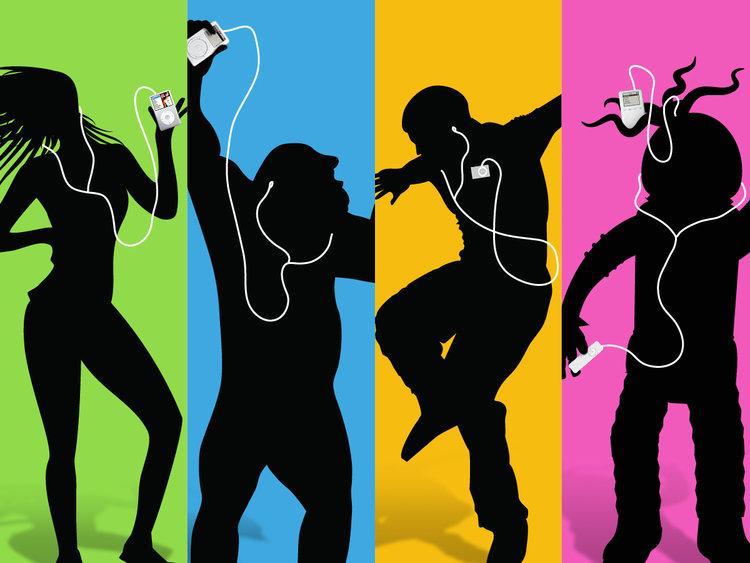
Whether Apple knew it or not, these commercials and print ads brilliantly applied the storytelling matrix. The ads set Apple apart as a company that is changing the lives of music listeners around the globe. The people in these ads were cool, trendy, and talented—everything that Apple’s target customer aspired to be.
Change x Aspirational = Disruptor.
The success of this campaign and the bold marketing endeavors that followed have led Apple to be one of the most famous disruptor companies of our generation.
Telling Your Brand’s Story
What about the other storytelling archetypes? If your brand isn’t a disruptor, what sort of story can you tell instead?
Underdog brands make the everyday customer feel understood. Ads focus on everyday situations that we can recognize in our own lives. Viewers think, “If that person in the ad did it, I can, too.” An example of an underdog marketing campaign is Progressive Insurance’s ads with Flo.
Survivor brands promote safety, reliability, comfort and nostalgia. Campaigns could show a heroic act that saves a community from destruction, or they could focus on regular people going about their lives and keeping their loved ones safe and happy. An example of a survivor marketing campaign is Subaru’s “They Lived” ad.
Protector brands emphasize trust, leadership, and high quality. Promotions from these brands will inspire trust and credibility. This messaging is especially effective for high-end luxury products and services. An example of a protector marketing campaign is the Mercedes Benz for Santa Claus ad.

The storytelling matrix encourages brands to listen. We need to be acutely aware of the needs, desires, and identities of our customers in order to craft compelling stories that they can relate to—narratives in which they see themselves.
Without this awareness, companies may blindly spend their time and money on marketing efforts that fundamentally lack the ability to connect with their target buyers.
But when stories are told well, that’s where the magic happens.
Here at CBC, we make the magic happen every day for our clients. Whether it’s an experiential marketing program or a creative ad campaign, we bring brands to life through compelling storytelling. Drop us a line to see how we can tell your brand’s unique story.


